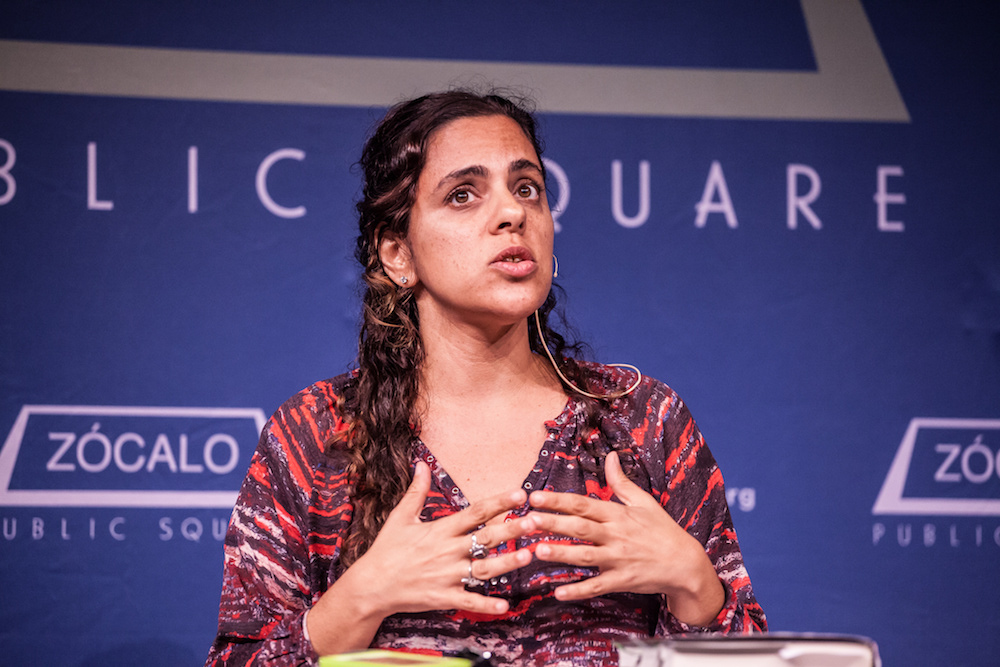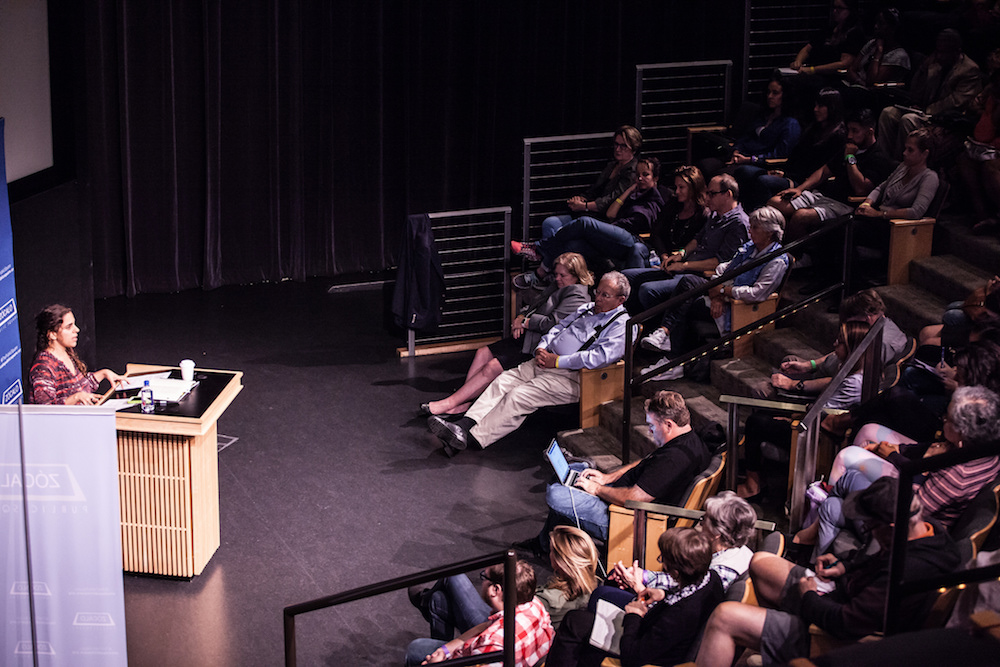
American college campuses, after considerable struggle, are succeeding in drawing a clearer line between consensual and non-consensual sex. But it’s far from clear when the rest of society will follow suit and adopt a similar standard.
That was the message of a Zócalo lecture entitled, “Are College Campuses Rewriting the Rules of Sex in America?” by journalist Vanessa Grigoriadis, contributing editor at The New York Times Magazine and author of Blurred Lines: Rethinking Sex, Power, and Consent on Campus.
Grigoriadis, speaking at the National Center for the Preservation of Democracy in Los Angeles, detailed the difficult and messy story of how universities have come to confront sexual assault on campus—and the backlash against these efforts.
“What’s happening on college campuses has a lot to do with the meaning of consent, and the need for us to change that meaning for a new generation,” she said. Through her extensive reporting on campuses, which involved spending time with students and others in social situations, she witnessed how a standard of affirmative consent before sex—also known as “yes means yes”—has taken hold among college students.
She also praised the state of California for adopting “yes means yes” in state law, and requiring it be part of the high school curriculum. But the standard is still largely confined to universities.
“The rules on college campuses are not the rules in the rest of America,” she said.
Grigoriadis offered a history of the movement to adopt affirmative consent that began with the passage of Title IX of the Education Amendments Act of 1972, which bars discrimination in education. More progress was made thanks to efforts by the Obama administration to make clear that Title IX applied to sexual assault, and to force universities to reckon more aggressively and clearly with the problem, she said.
She credited President Obama—who wrote about his two daughters—personally with acting on data that showed sexual assault on campus was a significant problem. But she added that the government and universities only got serious under pressure from students who organized to make sure new federal rules for handling sexual assault cases on campus were followed. Students at east coast universities were successful in lobbying schools and Washington politicians on the issue, and students at west coast universities led the way in making the issue bigger in the media.
But the momentum of the past few years has been reversed since Rolling Stone published a story in late 2014 on a gang rape at a University of Virginia fraternity that was later proved to be false. The resulting backlash came from fraternities, conservative and libertarian lawyers, religious institutions, and especially from the parents of accused students, who organized to push back against the Obama administration’s rules on sexual assault cases. “It turned out that there were problems with the campus courts, and there were some boys being railroaded,” she said. As a result, “what we’ve been watching since early 2015 is the death of the campus movement.”
This culminated recently in U.S. Secretary of Education Betsy DeVos’s decision to reverse two sets of the Obama guidelines on sexual assault. DeVos argued that the guidelines—specifically a standard of “preponderance of the evidence,” or proving that an assault occurred “more likely than not”—did not do enough to protect the rights of accused students.
Grigoriadis countered that the preponderance standard is high—and justified—because such cases are so messy and hard to prove.
And she added that DeVos’ decision, and statements by the secretary and her aides that exaggerate the incidence of wrongly accused students, are part of a major problem with misinformation on the campus sexual assault issue.
Grigoriadis warned that extreme or exceptional cases of sexual assault were creating false impressions. Made-up stories and railroaded students are actually exceptional, she said. So are cases of fraternity brothers using drugs to rape students. She also said perceptions of universities as having failed in this area—a claim made by the documentary The Hunting Ground—are exaggerated.
The problem, she said, is that sexual assault has become a hot button issue. “I can’t tell you how many parties I’ve been to where I’ve been cornered by someone who tells I’m totally wrong about sexual assault, or I’m totally right about this,” she said, adding that people are basing their opinions on preconceptions rather than facts.
At the same time, Grigoriadis was critical of universities for tolerating fraternities and protecting important athletes. And she called the online webinars and trainings that universities require students to take on sexual assault “a total mess.” In particular, while trainings often focus on “bystander education” for people who may witness sexual assault, she said that teaching self-defense strategies was more effective. In particular, people can avoid dangerous encounters by learning ways to identify students who were most likely to commit sexual assault by their behavior (“It’s the guys who are very misogynistic, who interrupt women, who make sexualized jokes,” she said.)
In response to questions from audience members about specific high-profile cases, Grigoriadis argued for not getting trapped in the back and forth of particular controversies. We should focus instead on establishing and teaching affirmative consent, she said, which requires changing social norms. And the good news is that today’s college students have already made that shift and support affirmative consent. Fundamentally, changing the definition of consent to “yes means yes” is “about gender parity in the bedroom.”
This is a shift, and a subject, that “is kind of a mess,” she concluded. “The last few years have been very messy. But the point is getting across.”





Send A Letter To the Editors